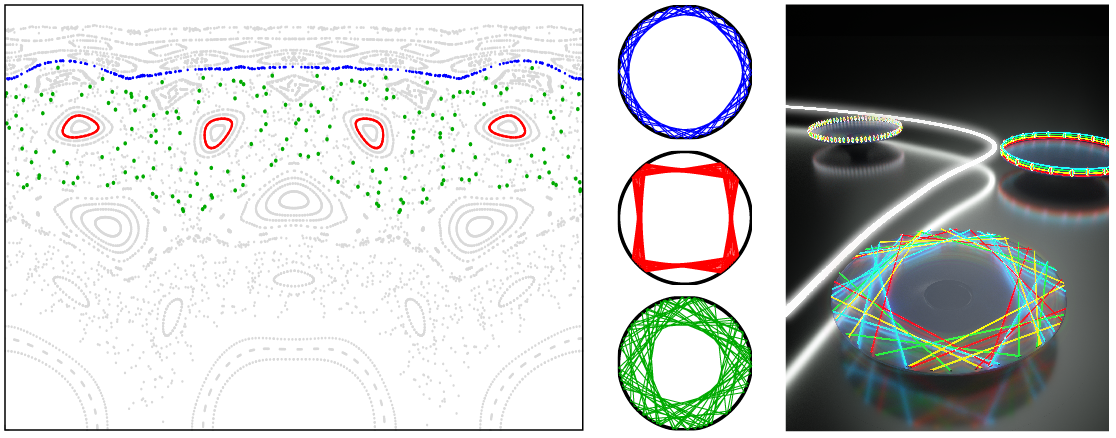
Research Overview
The research in our group concentrates on ultrahigh-Q microcavity photonics, especially for optical whispering-gallery-mode (WGM) microcavities. Whispering gallery waves were ever studied by Lord Rayleigh in the whispering gallery of St Paul's Cathedral in London, where sound travels around the circumference clinging to the walls. The same phenomenon can be observed in the Echo Wall of the Temple of Heaven in Beijing (picture on the right).
WGMs possess ultra-high Q factors (ultra-long lifetime of the photon inside the cavity) and very small mode volumes, thus providing an excellent platform for greatly enhanced light-matter interactions. So far, ultrahigh-Q WGM microcavities have been playing a pivotal role in both fundamental studies of modern physics and applications of integrated photonics.

Current Interest
Quantum and nonlinear optics
Benefitting from strongly enhanced light-matter interplays, ultrahigh-Q optical microcavities hold great potential for the studies of cavity quantum electrodynamics (photon-atom), cavity optomechanics (photon-phonon), nonlinear optics (photon-photon), etc. Current projects include
Cooling and entanglement in optomechanical systems
Strong coupling in hybrid cavity QED systems
Quantum effects in nonlinear optical materials
Microcavity nonlinear optics and spontaneous symmetry breaking

Asymmetric microcavities and wave chaos
Asymmetric resonant cavities (ARCs) with smoothly deformed boundaries present distinctive and fantastic properties compared with circular ones. For instance, the intracavity wave chaos builds a bridge between high-Q regular modes and leaky regions, making ARC an open system with unidirectional emission, which provides a convenient way to excite cavity modes and collect their energy. Also, the openness makes the effective Hamiltonian of the system non-Hermitian, leading to various interesting phenomena such as avoided resonance crossings, chirality of mode pairs, and exceptional points. Our recent interests about ARC include
Novel design of ARCs
Chaotic dynamics in ARCs
High-performance photonics applications using ARC

Microcavity-enhanced optical sensing and precision measurement
The ability to sense nanoscale objects is particularly crucial for a wide range of applications such as early-stage disease diagnosis, environmental monitoring, and homeland security. Optical evanescent-field sensors including microcavities and waveguides, have attracted much attention due to ultra-high sensitivity and label-free nature. Our group focuses on the fundamental mechanisms and practical techniques to detect nanoscale objects, down to the level of single nanoparticles, single viruses, and single molecules.
Microcombs (also known as Kerr frequency combs) are optical frequency combs that are generated from a continuous-wave pump laser by the Kerr nonlinearity in chip-scale microcavities. Benefiting from high-Q factors and ultra-small volumes of cavity modes, microcombs offer the tantalizing prospect of miniaturizing many precision measurement applications, such as timekeeping, LiDAR, chemical sensing, searching for exoplanets and coherent communications. Our interests include the nonlinear physics of soliton microcomb and microcomb-based precision measurement applications.
